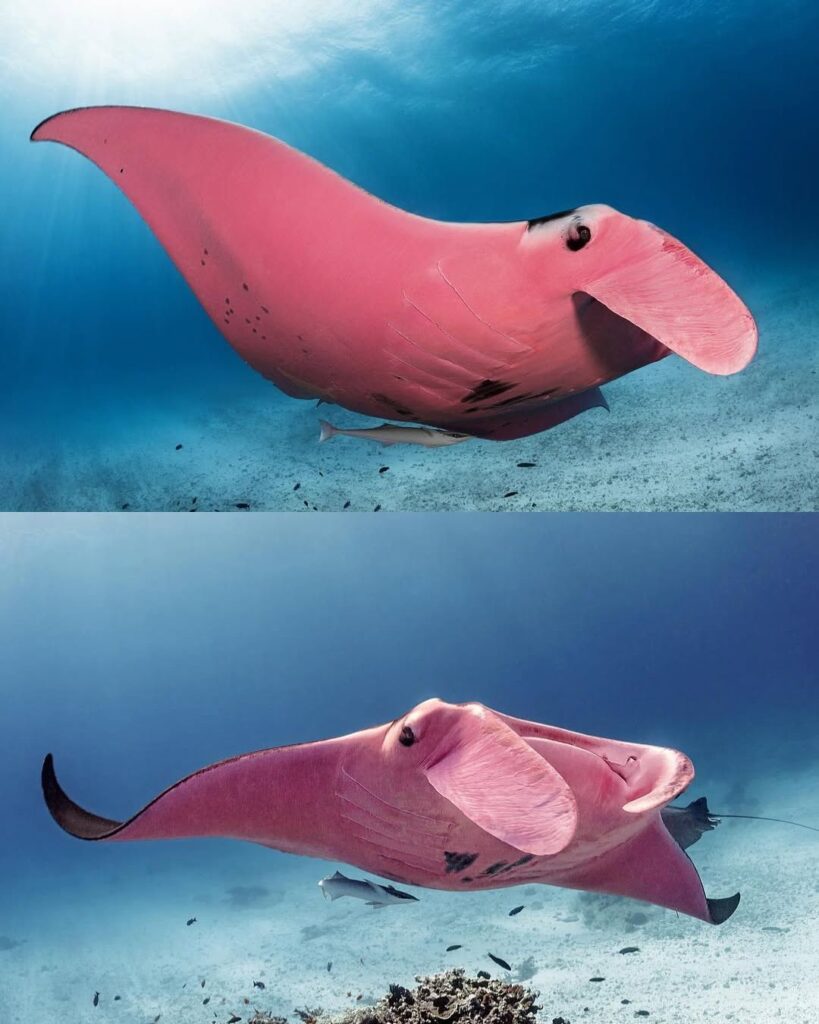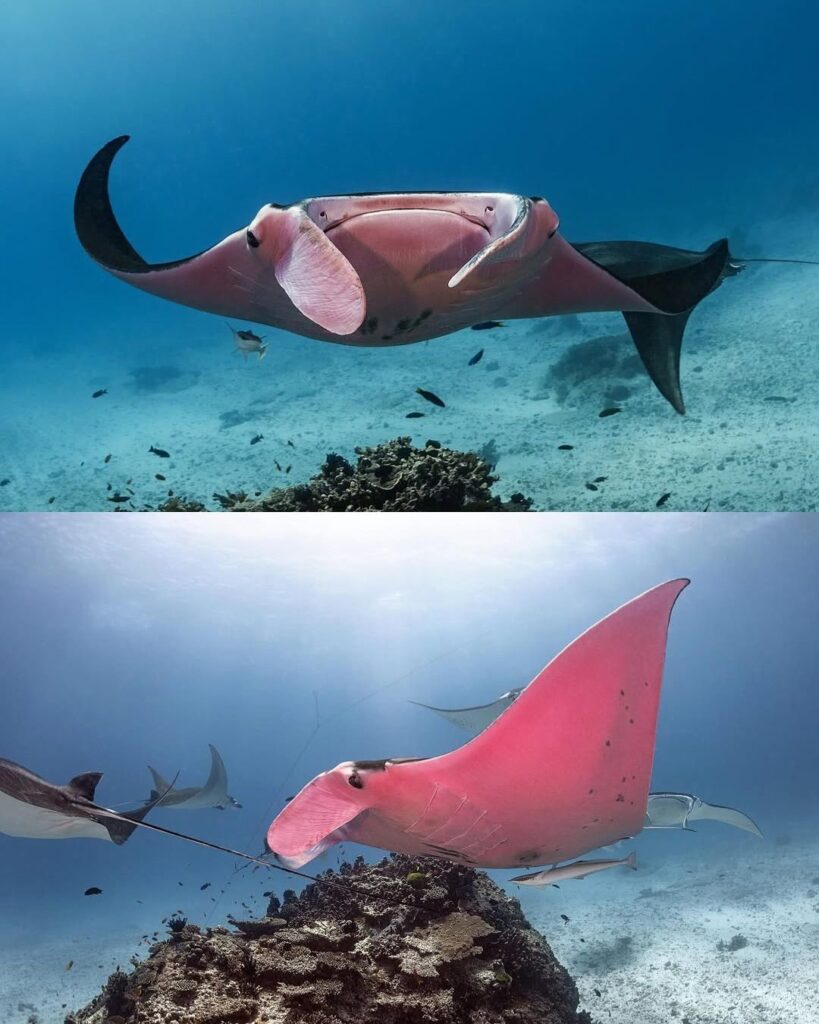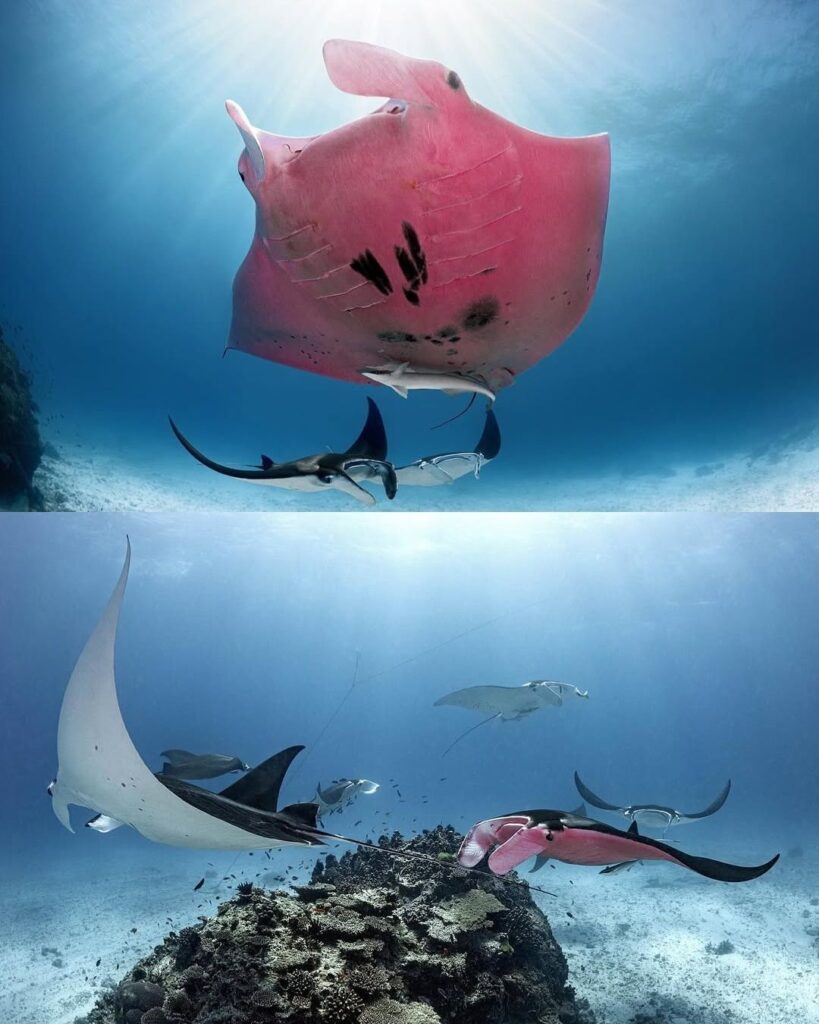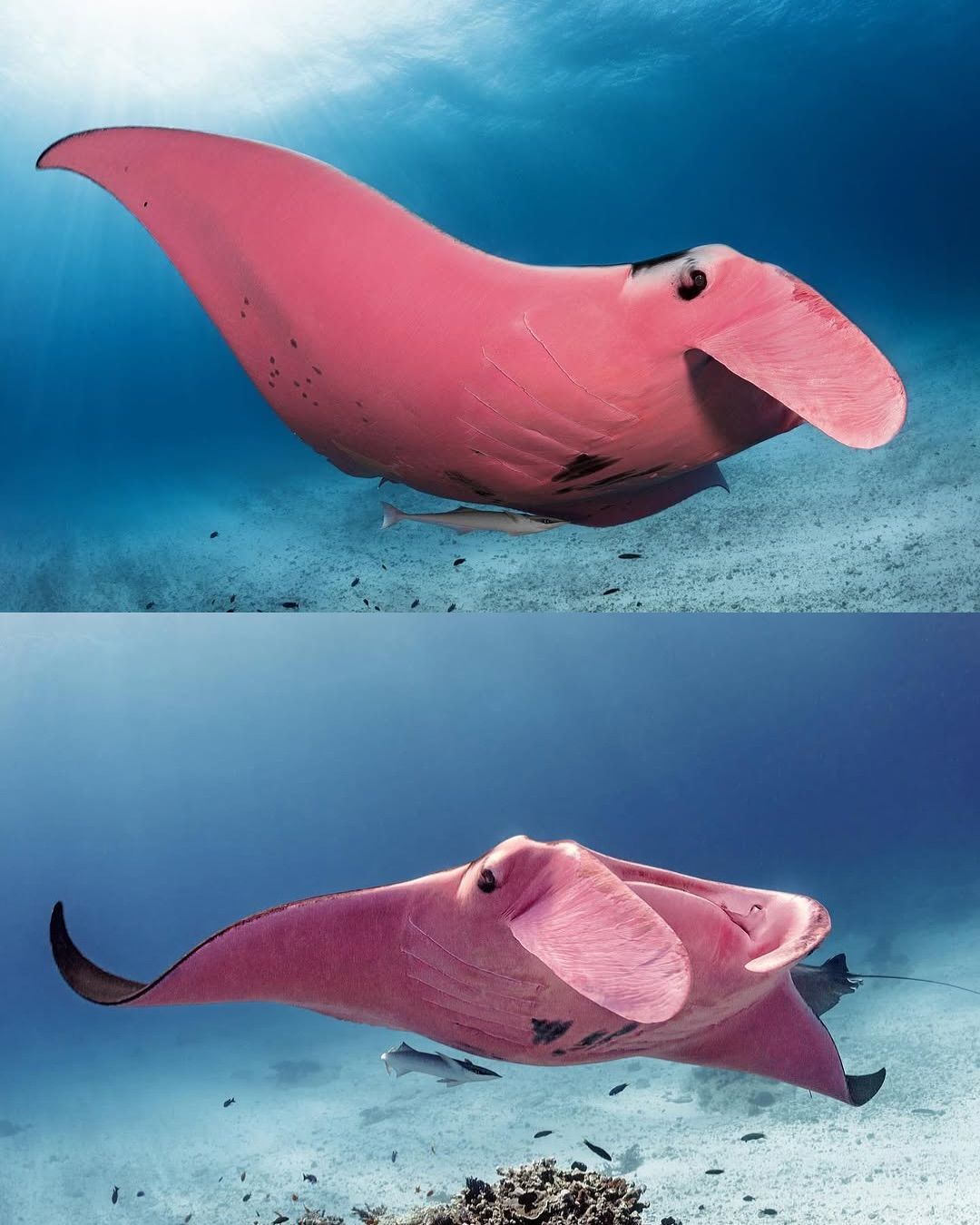Nature’s Living Artwork: The Discovery of the Pink Manta Ray
In the vast blue depths of the ocean, where countless creatures drift silently beneath the waves, nature still finds a way to surprise us. Among the endless hues of marine life — silvery schools of fish, neon corals, deep-sea predators — emerged a creature so rare, so mesmerizing, that scientists weren’t sure if it was real at first.
Meet Inspector Clouseau, the world’s only known pink manta ray. Spotted off the coast of Australia’s Great Barrier Reef, this stunning creature with a bubblegum-colored body has become a global sensation, not just for its beauty, but for the mystery surrounding its existence.

A Chance Encounter That Made History
It all began in 2015 when underwater photographer Kristian Laine was diving near Lady Elliot Island, located in the southern end of the Great Barrier Reef. What started as a routine dive turned into a once-in-a-lifetime experience when Laine noticed an enormous manta ray gliding past — except something was strikingly different.
It was pink.
Laine initially thought his camera settings were malfunctioning or his dive goggles were fogged. After all, manta rays are typically black, white, or a mix of both. A pink one? That sounded almost mythical.
But the ray was real — graceful, majestic, and unmistakably pink. He quickly snapped photos, not knowing at the time that he had just documented one of the most unique marine animals on Earth.

The Science Behind the Pink Hue
Once the images of the pink manta ray surfaced online, marine biologists around the world were stunned. Was it photoshopped? Was it some sort of coral reflection? Could it be a skin disease?
Turns out, this pink manta ray is very real and very healthy.
According to Project Manta, a long-term research initiative focused on studying manta rays in Australian waters, the individual was first spotted in 2015 and has been sighted a handful of times since then. Researchers confirmed that this was not an albino manta (which would lack pigment) or a leucistic one (which has partial pigment loss). Instead, it’s believed the ray has a rare genetic mutation that affects its melanin expression — likely a condition called erythrism, which gives animals a reddish or pinkish tint.
In other words, it’s not sick. It’s just born this way — spectacularly unique.
Why This Matters: Not Just a Viral Moment
In a world filled with content overload and social media distractions, a pink manta ray isn’t just viral — it’s a symbol. A reminder that Earth still holds secrets and that the ocean, despite being explored for centuries, is far from fully known.
In fact, scientists estimate we’ve only explored less than 20% of the world’s oceans. For every blue whale we spot, every dolphin pod we follow, there are hundreds of species still undiscovered. The pink manta is proof that we haven’t seen everything yet, and that nature still has cards to play.

My Take: We Need to Protect Creatures Like This
Let me be clear: this article isn’t just about awe and wonder. It’s also a call to action.
This pink manta ray isn’t in a cage. It’s not in a lab. It lives free in the wild — in an ecosystem that is under daily threat from climate change, coral bleaching, plastic pollution, and deep-sea mining. It would be tragic if a creature this rare vanished because we were too busy chasing oil or ignoring our environmental duties.
This pink manta shouldn’t be the last of its kind. But it might be — unless we start treating the ocean with respect, not as a dump or an industry zone, but as a living, breathing world filled with irreplaceable magic.
The Life of a Manta Ray: Gentle Giants of the Sea
To truly appreciate how special this pink manta is, you have to understand how incredible manta rays are as a species.
Reef manta rays (like this pink one) can grow up to 5 meters wide and live over 40 years.
They are filter feeders, eating tiny plankton and helping maintain balance in ocean ecosystems.
Mantas have the largest brains of any fish species and show signs of intelligence, memory, and even emotional learning.
Unlike stingrays, manta rays have no stingers — they’re completely harmless to humans.
Photographer’s Perspective: “I Thought My Camera Was Broken”
Kristian Laine, who captured the famous images, said in interviews that he was stunned, confused, and later humbled. “I thought my white balance was off or maybe it was a light trick,” he said. “But it wasn’t — it was real, and I was lucky enough to be there.”
Since then, Clouseau has only been spotted a handful of times. Divers and marine researchers try not to chase or disturb the animal — he’s monitored using gentle tagging and observation. The idea is to let him live his life undisturbed, even if millions want a glimpse.
The Name: Why “Inspector Clouseau”?
The name comes from the famous fictional detective in The Pink Panther series — a perfect nod to both the creature’s color and its elusive nature. Clouseau the manta ray has lived up to the name: rarely seen, impossible to forget.
He isn’t tracked like a zoo exhibit. He’s wild and free, appearing only when he wants, always surprising, always beautiful.
Final Thoughts: The Pink Ray We Didn’t Know We Needed
In times when headlines are full of war, pollution, and bad news, stories like this remind us why we fight to preserve the planet.
The pink manta ray is not just a scientific curiosity. It’s hope — hope in the form of a 3-meter-wide, glowing pink miracle gliding through deep blue water. It’s living proof that Earth still creates wonders that no AI can replicate, no CGI can replace, and no human can manufacture.
And for once, the world saw something viral that didn’t come from controversy or conflict — but from pure, natural magic.
So next time you feel overwhelmed by the state of the world, remember this: somewhere in the Great Barrier Reef, a giant pink manta ray swims silently, reminding us all that beauty still exists. And it’s worth protecting.

